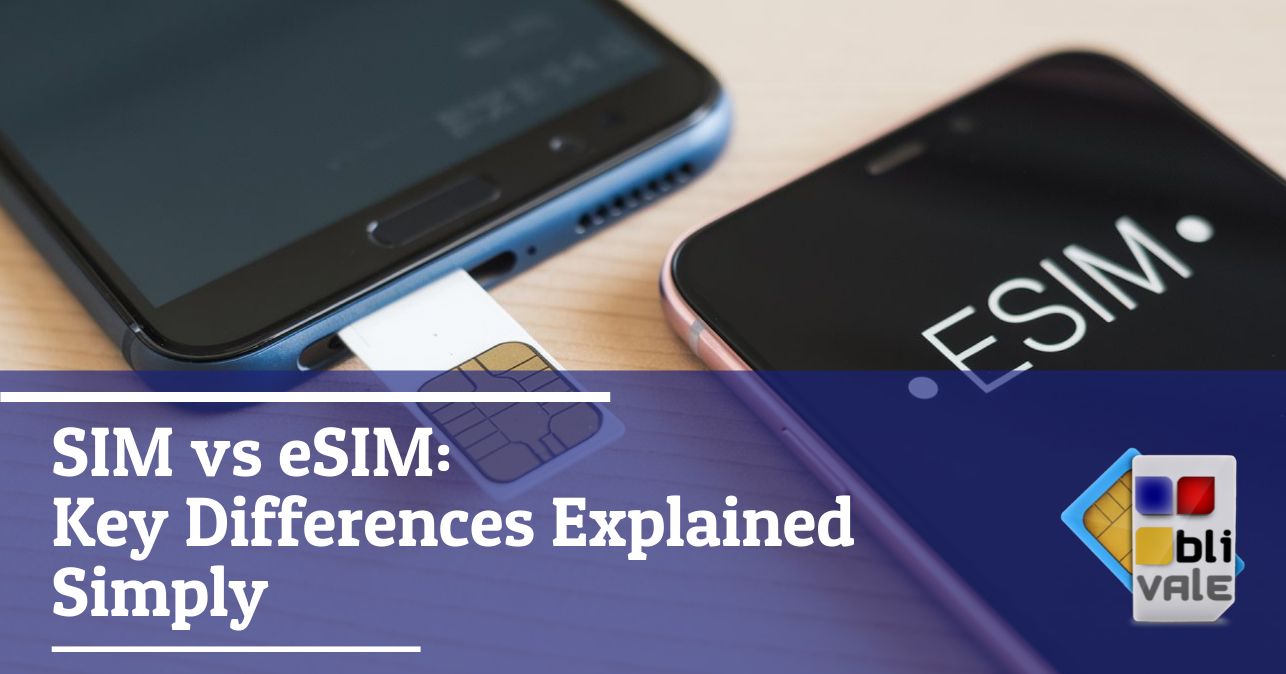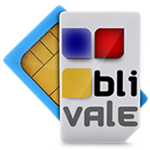In an increasingly connected world, understanding the technologies that keep us online is essential. Find out everything you need to know about the differences between traditional SIMs and international eSIMs.
Introduction to eSIM Technology
In the digital age we live in, staying connected is no longer a luxury but a daily necessity. Whether you are traveling for work, exploring new countries or simply want a reliable connection, mobile connectivity technologies are essential. Among these, the revolutionary eSIM technology is quickly gaining ground over traditional SIM Cards.
But what exactly are eSIMs, and how do they differ from the SIM cards we’ve been using for decades? This article will explore both technologies in detail, helping you understand which is the best solution for your connectivity needs.
What is a Traditional SIM Card?
The traditional SIM (Subscriber Identity Module) is a small removable card that we insert into our mobile devices. It contains a microchip that stores user information, including:
The phone number
Personal contacts
Text messages
Telephone operator information
SIM cards were introduced in the 1990s and revolutionised the way we use mobile phones, allowing users to easily transfer their number and data from one device to another.
Over the years, SIM cards have shrunk considerably in size, from the standard SIM to the micro-SIM, up to the current nano-SIM, but the basic concept has remained unchanged: a physical card that must be inserted into a dedicated slot on the device.
The eSIM Revolution: What It Is and How It Works
The eSIM (embedded SIM) is the natural evolution of SIM technology. Unlike its physical counterpart, the eSIM is integrated directly into the device during manufacturing. It is not a card to be inserted or removed, but a programmable chip soldered to the motherboard of the device.
This tiny chip can store multiple carrier profiles, allowing users to switch between carriers without having to swap out a physical card. The process is completely digital and can be managed through the device settings or through dedicated apps.
SIM vs eSIM: The Key Differences
1. Physical Form
Traditional SIM : It is a removable physical card that must be inserted into a special slot on the device.
eSIM : It is a chip integrated directly into the device, not removable and not visible externally.
2. Activation and Configuration
Traditional SIM : Requires the purchase of a physical card, often with a visit to an operator store or receiving it by post.
eSIM : It can be activated by scanning a QR code or through an app, without the need for physical components. The entire process can be completed in a few minutes, wherever you are.
3. Change Operator
Traditional SIM : To change operator you need to remove the old SIM and insert a new one.
eSIM : Allows you to change operators via software, without the need for additional hardware. It also allows you to store profiles for multiple operators at the same time.
4. Compatibility with Devices
Traditional SIM : Compatible with most mobile devices produced in the last few decades.
eSIM : Compatibility is limited to newer devices. However, more and more manufacturers are incorporating this technology into their new models.
5. Resilience and Durability
Traditional SIM : Can be damaged, lost or stolen. It is subject to physical wear and tear.
eSIM : Being integrated into the device, it cannot be lost or damaged separately. It has a theoretical lifespan equal to that of the device itself.
6. Dual SIM
Traditional SIM : To have two numbers you need a device with a dual SIM slot or use a hybrid SIM.
eSIM : Allows you to have an eSIM plus a traditional SIM, or in some cases multiple eSIMs, allowing the use of multiple numbers without additional hardware.
7. National SIM Cards vs International eSIMs
National SIM Cards :
They work mainly in the operator's home country
When used abroad, they activate expensive international roaming
They require physical replacement with local SIMs to avoid high costs abroad
They are linked to a single national operator
They often offer pricing plans optimized for home use only
International eSIMs :
Specifically designed for use in multiple countries
They allow you to activate local data plans without changing the physical card
They offer competitive rates compared to traditional roaming
They allow you to keep your main number active while using a local data connection
They often include multi-country or regional packages (e.g. Europe, Asia, etc.)
Allows you to add data on-demand when needed
Ideal for those who frequently cross national borders
8. Costs and Pricing Plans
Traditional SIM Cards :
National plans are generally inexpensive for home use.
International roaming costs often high and not very transparent
They require the purchase of local SIMs (with activation costs) in each country visited
Often tied to long-term contracts
International eSIMs :
Flexible plans based on travel duration (1 day, 1 week, 1 month)
Transparent rates with no hidden costs
Unlimited data options for intensive travellers
Payment only for the period actually needed
No activation or deactivation costs
Possibility to pre-purchase packages before departure
9. Activation Process Abroad
Traditional SIM Cards :
Need to find a physical store in the destination country
Potential language barriers when purchasing
Request for identity documents in many countries
Time wasted during vacation or business trip
International eSIMs :
Activation possible before departure
Instant connection upon arrival, without looking for a store
Completely digital procedure in Italian language
No physical documents required
Saving precious time while traveling
If you are thinking of taking a trip alone or with friends or for work, do not forget the importance of staying connected wherever you are. For unlimited Internet connection, contact BLIVALE where you can get unlimited Internet according to the destinations:
For unlimited plans like data BLIVALE guarantees free roaming anywhere in the world, no additional or hidden costs. Don't let the lack of connection stop you; get ready to explore the world with freedom and spontaneity.
The Benefits of eSIMs for International Travelers
For frequent travelers, eSIMs offer significant advantages:
No Physical Change : No more need to purchase local SIM cards or carry multiple SIM cards when traveling.
Instant Activation : You can activate a local data plan before you even arrive at your destination.
Keeping Your Original Number : You can keep your main number active to receive calls and SMS, while simultaneously using a local data plan.
Flexibility : Ease of switching between operators based on the country visited, without having to search for physical stores.
Sustainability : Reducing the use of plastic for SIM cards contributes to a lower environmental impact.
eSIM Unlimited International: The Ultimate Solution for Travelers
eSIMs with unlimited data are the ideal solution for those who travel frequently or need large amounts of data abroad. These plans offer:
Uninterrupted data connection without worrying about exceeding limits
Coverage in multiple countries with one plan
Instant activation without having to go to physical stores
Ability to keep your main phone number active
BLIVALE International eSIMs: Connectivity Without Borders
For those looking for a reliable and affordable solution to stay connected while traveling internationally, BLIVALE Unlimited eSIMs are an excellent choice. BLIVALE offers country and region-specific plans, allowing you to select exactly what you need.
Why Choose BLIVALE eSIMs:
Global Coverage : Available for over 200 countries and regions
Unlimited Plans : Surf without worrying about running out of data
Instant Activation : Just scan a QR code to be online immediately
24/7 Customer Support : Technical support available at any time
Compatibility : They work with all devices that support eSIM technology
Competitive Prices : Advantageous rates compared to traditional international roaming
eSIM by Region:
BLIVALE offers specific eSIM plans for different regions of the world:
Europe : Seamless connectivity across all European Union countries
North America : Full coverage in USA and Canada
Asia : Dedicated plans for the most visited Asian countries
Middle East : Reliable connection in a region often problematic for connectivity
Africa : Coverage in major African countries
Oceania : Solutions for Australia and New Zealand
Single Country eSIM:
For those traveling to a specific destination, BLIVALE also offers country-specific plans, optimized to provide the best possible connection with local networks.
Which to Choose: SIM or eSIM?
The choice between traditional SIM and eSIM depends on your specific needs:
Traditional SIM May Be Better If:
You are using an older device that is not compatible with eSIM technology
You prefer the familiarity of physical card management
You need to change devices frequently, some of which may not support eSIM
eSIM Might Be Better If:
You travel frequently internationally
Do you want a more flexible solution for changing operators?
Do you prefer a completely digital activation process?
You have a modern device that supports this technology
You are attentive to the environmental impact
eSIM Compatible Devices
eSIM technology is supported by a growing number of devices. Here are some of the most popular:
iPhone (XR, XS series and later)
iPad (Pro, Air, recent mini)
Apple Watch (Series 3 and later)
Google Pixel (3 and later)
Samsung Galaxy (S20 and later)
Many recent models from Huawei, Motorola, Oppo and other manufacturers
Before opting for an eSIM, always check the compatibility of your device by consulting the BLIVALE technical specifications .
The Future of Mobile Connectivity
eSIM technology is undoubtedly the future of mobile connectivity. With the rise of Internet of Things (IoT) devices and the growing need for flexible solutions, experts predict that eSIMs will become the standard in the coming years.
This evolution will lead to:
Thinner and lighter devices thanks to the elimination of the physical slot
Increased water and dust resistance
Fully digital activation processes
Greater flexibility for users
Reducing the environmental impact of producing physical cards
Conclusion
The move from traditional SIMs to eSIMs represents a significant evolution in the world of mobile telephony. While SIM cards have served users faithfully for decades, eSIMs offer a more flexible, convenient and modern solution to stay connected, especially when traveling internationally.
BLIVALE’s International Unlimited eSIMs are an excellent option for those looking for borderless connectivity. With country and region-specific plans, global coverage, and instant activation, BLIVALE offers a complete solution for your connectivity needs abroad.
Whether you are a casual traveler or a digital nomad, understanding the differences between SIMs and eSIMs will help you make an informed choice and find the solution that best suits your connectivity needs.
Are you ready to enter the era of unlimited connectivity? Explore BLIVALE's international eSIM options and find the perfect plan for your next trip!









